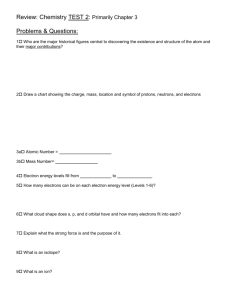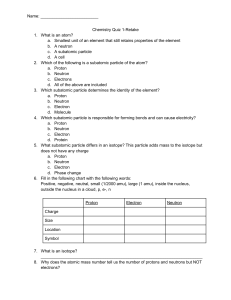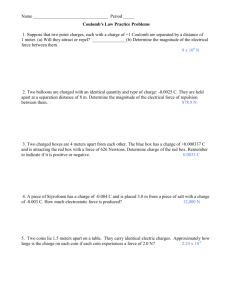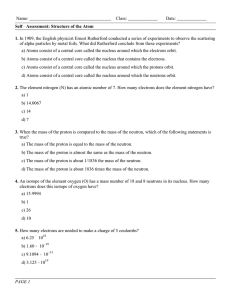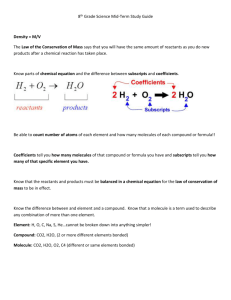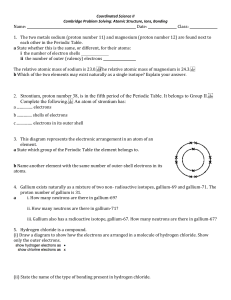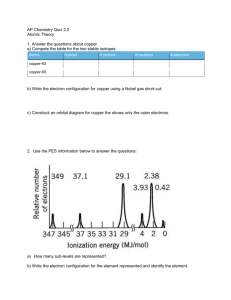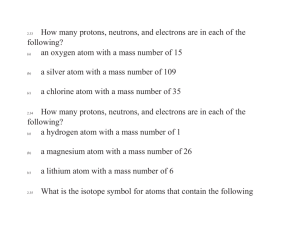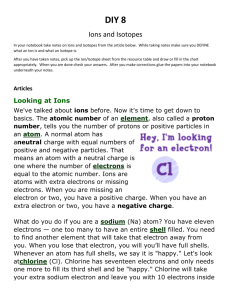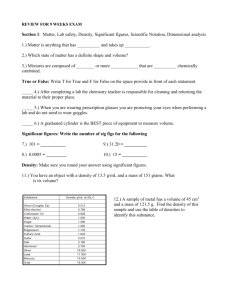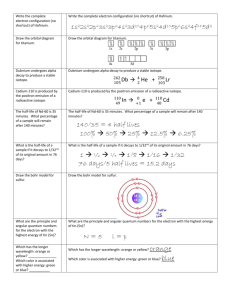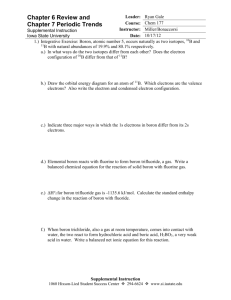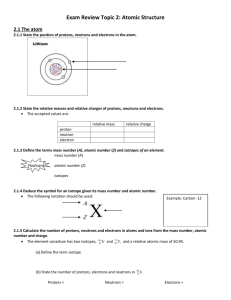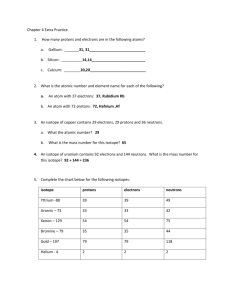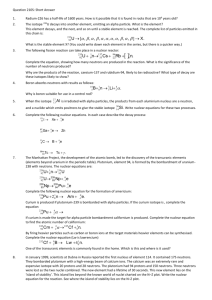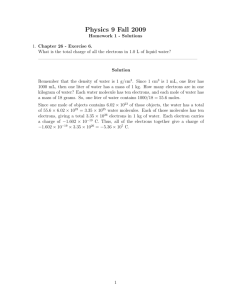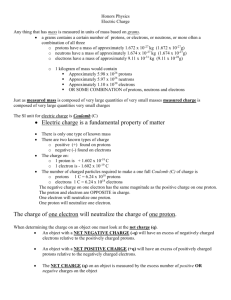Exam 1 - Chemistry at Winthrop University
advertisement
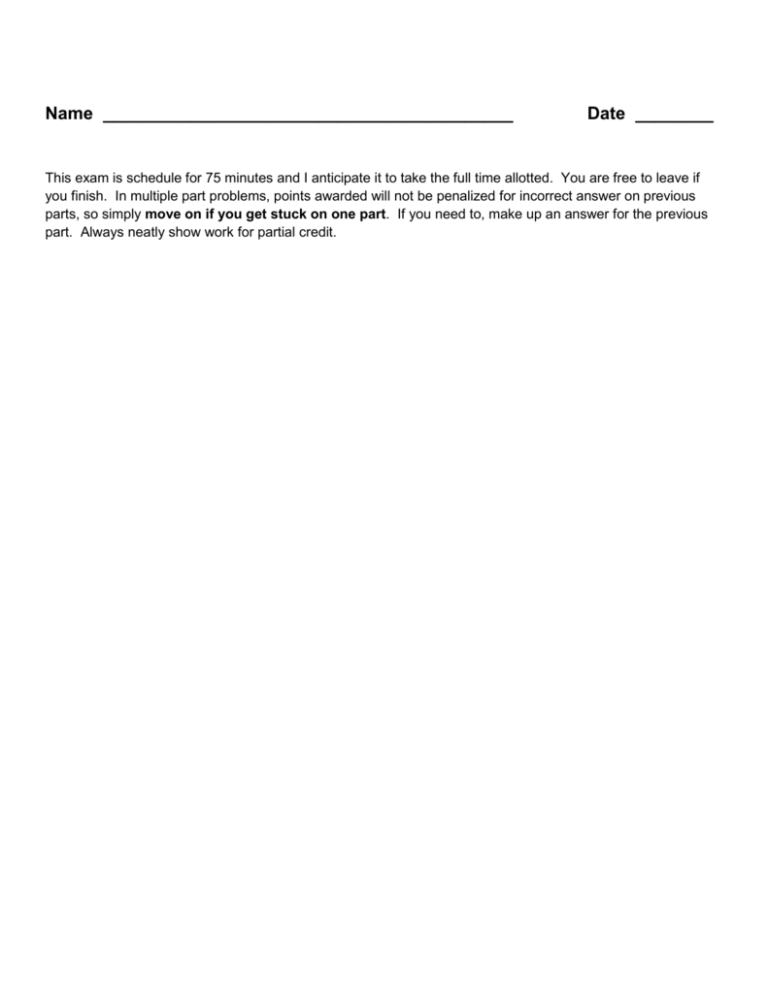
Name __________________________________________ Date ________ This exam is schedule for 75 minutes and I anticipate it to take the full time allotted. You are free to leave if you finish. In multiple part problems, points awarded will not be penalized for incorrect answer on previous parts, so simply move on if you get stuck on one part. If you need to, make up an answer for the previous part. Always neatly show work for partial credit. 1. What element has an atomic number of 54? 2. How many neutrons does is in the nucleus of: a. Br-79 b. Se-79 3. Which element contains four electrons in the valence shell? Cl Be As Si 4. During radioactive decay, alpha particles are sometimes. These positively charged particles are made of two protons and two neutrons. Alpha particles are an isotope of what element? Please justify your answer. 5. An orbital in which of these subshells can hold more than two electrons? Circle all that apply. 2p 2s 3p 4f 5f 5s 4d 3d 3p 1s 6. In each of the following lists of atoms, identify which atoms have 2 unpaired electrons. Al Si P S Cl Ar Y Zr Nb Mo Tc Ru Rh Pd Ag Cd 7. A sample of Boron is composed of two isotopes: 10B (19.9% abundant), which has an exact mass of 10.0129 amu, and 11B (80.1% abundant) which has an exact mass of 11.0093 amu. Determine the average mass of Boron. You must show your work to receive credit. 8. The new PS4 gaming system can be upgraded to have a 2.0 x 103 Gigabyte hard drive. How many bytes is this? 9. A human body contains approximately 4.7 L of blood. a. What is this volume expressed in L? b. What is this volume expressed in cm3? c. What is this volume expressed in m3? d. Red blood cells, which have a density of 1.139 𝑔 , 𝑚𝐿 account for 45% of the volume of blood in a human body. Determine the mass of the red blood cells in a human body. 10. A rectangle is 250.86 mm long and 298.355 m wide. Calculate the area of this rectangle and express it in m2. 11. Why do elements in the same group have similar chemical properties? 12. For each of the following, identify the SI unit. Length ______________ mass ______________ Volume _____________ Density ______________ time _______________ speed limit ____________ 13. Light travels at a rate of 3.00 x 105 km/s. How long will it take light to travel from Winthrop University to Downtown Charlotte (25 miles)? Note that 1 mile = 1.609 km. (5 pts.) 14. Please complete the following for the element with 109 46𝑋: a. What is this element? b. How many neutrons does this isotope have? c. Using the information below, calculate the mass of this isotope in kg? Neutron = 1.6727 x 10-24 g Proton = 1.6726 x 10-24 g Electron = 9.109 x 10-28g d. What percentage of the isotope’s mass is from the electrons? e. Write the electron configuration of this element. f. How many core electrons does this element have? g. Write the electron configuration using shorthand notation. h. Show the electron orbital diagram. You may use shorthand notation. 15. How many valence electrons does each element have? Carbon (Z=6) Sulfur (Z=16) Iridium (Z = 77) Barium (Z = 56) Gadolinium (Z = 64) 16. Magnesium has three naturally occurring isotopes. Complete the following table: Isotope 24 25 26 Abundance (%) Mg Mg Mg Exact mass 23.98504 10.00 24.95853 25.98259 17. Assuming that a proton is perfect sphere with a density of 3.996 x 1014 g/mL, determine the radius of a 4 proton. Express this value in meters. Note the mass is given in 14c. 𝑉 = 3 𝜋𝑟 3

